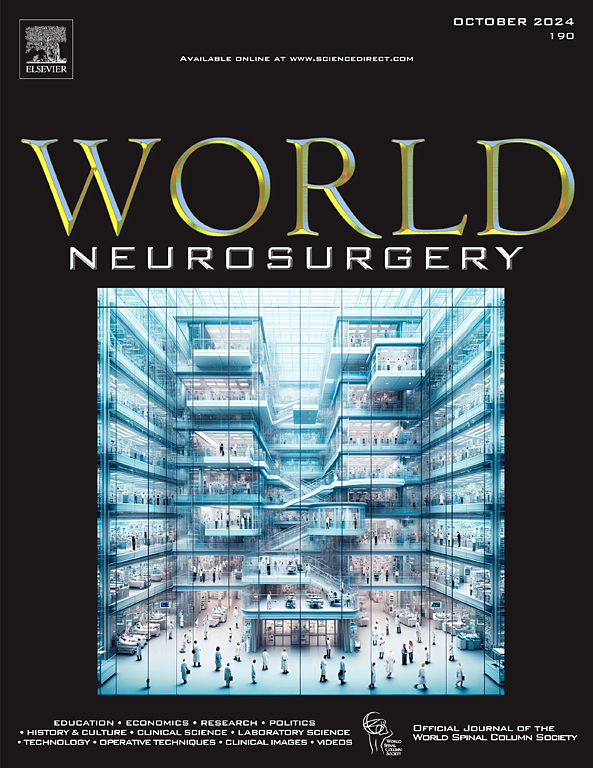Utilising Natural Language Processing to Identify Brain Tumor Patients for Clinical Trials: Development and Initial Evaluation
IF 1.9
4区 医学
Q3 CLINICAL NEUROLOGY
引用次数: 0
Abstract
Background
Identifying patients eligible for clinical trials through eligibility screening is time and resource-intensive. Natural Language Processing (NLP) models may enhance clinical trial screening by extracting data from Electronic Health Records (EHRs).
Objective
We aimed to determine whether an NLP model can extract brain tumor diagnoses from outpatient clinic letters and link this with ongoing clinical trials.
Methods
This retrospective cohort study reviewed outpatient neuro-oncology clinic letters, to detect brain tumor diagnoses. We used an NLP model to perform a Named Entity Recognition + Linking algorithm that identified medical concepts in free text and linked them to a Systematized Nomenclature of Medicine Clinical Terms ontology, which we used to search a clinical trials database. Human annotators reviewed the accuracy of the concepts extracted and the relevance of recommended clinical trials. Search results were shown on a notification dashboard accessible by clinicians and patients on the EHR. We report the model's performance using precision, recall, and F1 scores.
Results
The model recognized 399 concepts across 196 letters with macro-precision = 0.994, macro-recall = 0.964, and macro-F1 = 0.977. Linking the model results with a clinical trials database identified 1417 ongoing clinical trials; of these, 755 were highly relevant to the individual patient, who met the eligibility criteria for trial recruitment.
Conclusions
NLP can be used effectively to extract brain tumor diagnoses from free-text EHR records with minimal additional training. The extracted concepts can then be linked to ongoing clinical trials. While further analysis is required to assess the impact on clinical outcomes, these findings suggest a potential application for integrating NLP algorithms into clinical care.
利用自然语言处理识别脑肿瘤患者的临床试验:发展和初步评估。
背景:通过资格筛选确定符合临床试验条件的患者需要耗费大量时间和资源。自然语言处理(NLP)模型可以通过从电子健康记录(EHR)中提取数据来增强临床试验筛选。目的:我们旨在确定NLP模型是否可以从门诊病历中提取脑肿瘤诊断,并将其与正在进行的临床试验联系起来。方法:本回顾性队列研究回顾门诊神经肿瘤学临床信函,以检测脑肿瘤诊断。我们使用一个NLP模型来执行命名实体识别+链接算法,该算法识别了自由文本中的医学概念,并将它们链接到医学临床术语系统化命名法(somed - ct)本体,我们使用该本体搜索临床试验数据库。人类注释者审查了提取的概念的准确性和推荐的临床试验的相关性。搜索结果显示在通知仪表板上,临床医生和患者可以在EHR上访问。我们使用精度、召回率和F1分数来报告模型的性能。结果:该模型识别了196个字母中的399个概念,宏精度=0.994,宏召回率=0.964,宏f1 =0.977。将模型结果与临床试验数据库联系起来,确定了1,417项正在进行的临床试验,其中755项与个体患者高度相关,符合试验招募的资格标准。结论:NLP可以有效地从自由文本EHR记录中提取脑肿瘤诊断,只需最少的额外训练。然后,提取的概念可以与正在进行的临床试验联系起来。虽然需要进一步的分析来评估对临床结果的影响,但这些发现表明将NLP算法整合到临床护理中的潜在应用。
本文章由计算机程序翻译,如有差异,请以英文原文为准。
求助全文
约1分钟内获得全文
求助全文
来源期刊

World neurosurgery
CLINICAL NEUROLOGY-SURGERY
CiteScore
3.90
自引率
15.00%
发文量
1765
审稿时长
47 days
期刊介绍:
World Neurosurgery has an open access mirror journal World Neurosurgery: X, sharing the same aims and scope, editorial team, submission system and rigorous peer review.
The journal''s mission is to:
-To provide a first-class international forum and a 2-way conduit for dialogue that is relevant to neurosurgeons and providers who care for neurosurgery patients. The categories of the exchanged information include clinical and basic science, as well as global information that provide social, political, educational, economic, cultural or societal insights and knowledge that are of significance and relevance to worldwide neurosurgery patient care.
-To act as a primary intellectual catalyst for the stimulation of creativity, the creation of new knowledge, and the enhancement of quality neurosurgical care worldwide.
-To provide a forum for communication that enriches the lives of all neurosurgeons and their colleagues; and, in so doing, enriches the lives of their patients.
Topics to be addressed in World Neurosurgery include: EDUCATION, ECONOMICS, RESEARCH, POLITICS, HISTORY, CULTURE, CLINICAL SCIENCE, LABORATORY SCIENCE, TECHNOLOGY, OPERATIVE TECHNIQUES, CLINICAL IMAGES, VIDEOS
 求助内容:
求助内容: 应助结果提醒方式:
应助结果提醒方式:


